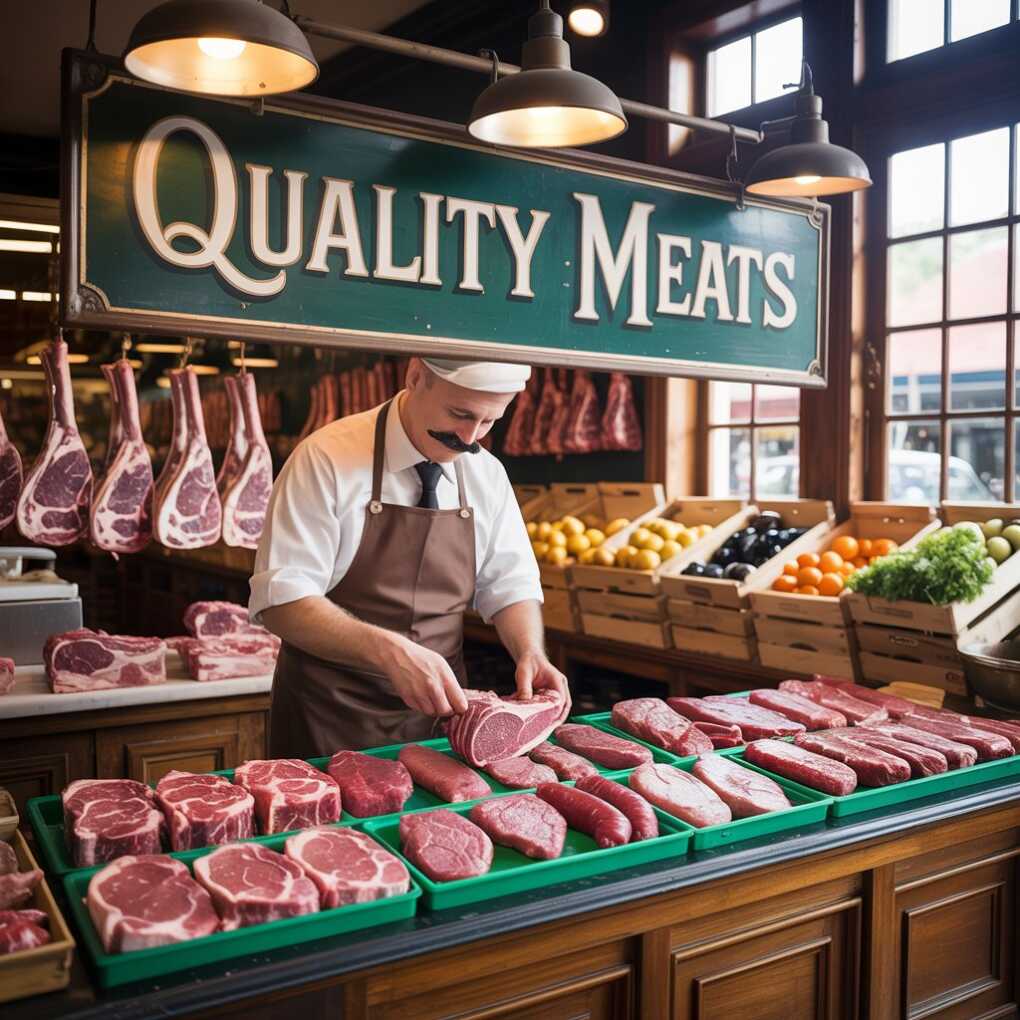For both culinary enthusiasts and everyday cooks, having a comprehensive understanding of how to select and purchase high-quality meats is paramount to the success of any meal. The vast variety found in a meat market can be both exhilarating and overwhelming. However, with the right knowledge under your belt, you can navigate the meat aisle like a pro, ensuring you leave with the finest cuts to elevate your dishes.

Understanding Meat Grades and Cuts
Before venturing into the heart of a meat market, familiarise yourself with the different grades and cuts of meat available. Grading systems help determine the quality, based on factors such as marbling, colour, and age. In the United Kingdom, beef grading may range from standard to prime, with each level dictating the potential tenderness, flavour, and juiciness of the meat.
However, grade isn’t the only consideration. The specific cut of meat also plays a critical role in its culinary application. For instance, tenderloin is prized for its softness and is excellent when cooked quickly over high heat, while brisket, laden with connective tissues, is best when cooked slowly, allowing time for those tissues to tenderise.
Seasonality and Source
Alongside cut and grade, the season and source of the meat are just as impactful in your selection. Locally-sourced meats tend to be fresher and support local farmers and economies. Being mindful of seasonality can also guide you towards the freshest options, as different animals are raised for slaughter at different times of the year.
It’s particularly important to ask your butcher about sourcing, as this gives you insight into the animal’s diet, living conditions, and overall treatment. These factors are not only influential on the ethical scale but also affect the flavour and quality of the meat you purchase.
The Importance of a Knowledgeable Butcher
Developing a relationship with a knowledgeable and trusted butcher can significantly enhance your meat-purchasing experience. An experienced butcher will provide invaluable advice on the best cuts for your needs, share tips on how to cook them, and maybe even offer insights into upcoming premium selections.
Moreover, a reputable butcher often means a reputable source of meat. Make an effort to learn about their practices, including how they select their meats and their philosophies regarding animal welfare and sustainability. This relationship directly correlates to the integrity and standards of the meat you bring to your table.
Tips for Evaluating Meat Quality
When examining meats, use your senses. Look for a healthy colour, which can range from bright red in beef to pale pink in pork. The meat should also have a firm texture and minimal weepage — this is the water that can commonly be found in packaged meats and can indicate poor handling or freezing practices.
Storing and Handling Meats
After leaving the meat market, proper storage and handling are crucial to maintaining the quality of your purchase. Meat should be refrigerated or frozen promptly after purchase to prevent bacterial growth. It is also essential to store meat correctly by using airtight packaging or containers made for meat storage.
Experimenting with Different Cuts
Branching out from your typical meat selections can lead to delicious discoveries. Try experimenting with less familiar cuts like skirt steak, oxtail, or rabbit to diversify your culinary repertoire. These cuts often offer rich flavours and are typically more cost-effective than the popular choices like ribeye or sirloin.
Seasoning and Preparation
Preparation methods can make or break the quality of the meat you’ve selected. Understanding which cuts are best suited to grilling, braising, roasting, or stewing will enhance their inherent qualities. Likewise, simple seasonings can allow the natural flavour of the meat to shine through. Trust in the quality of the meat and let it speak for itself with minimal embellishments.
Investing in the Right Equipment
To handle and prepare your meats like a pro, quality tools are a must. Investing in a good set of knives and meat thermometers, among other utensils, is as essential as the meat itself. These tools help ensure proper handling, accurate cooking, and, ultimately, the best dining experience.
The Role of Ethics in Meat Consumption
Ethics in meat consumption have seen growing interest, with many consumers now considering the welfare of animals and the environmental impact of their meat choices. Raised awareness has seen an increased demand for organic, free-range, and sustainably sourced meats. When possible, select options that align with these ethical standards to support a more responsible meat industry.
Continual Learning and Exploration
The journey of mastering the meat market is continual. As consumers, we should remain curious and informed about industry changes, advances in animal husbandry, and shifts in ethical farming. Engaging with communities, attending workshops, and even following your favourite butchers on social media can keep you at the forefront of the latest meat trends and techniques.
Conclusion
Armed with this guide, you’re now equipped to navigate the complex landscape of the meat market with confidence. Remember to keep these key considerations in mind, from grading and sourcing to ethical implications and culinary exploration. Whether you’re a home cook or a professional chef, the importance of quality meats cannot be overstated.
Your understanding of how to identify and choose the best products will not only enhance your dishes but also contribute to a more ethically conscious and sustainable meat industry. Take this knowledge, visit your local meat market, and take the first step towards mastering the art of meat selection.
